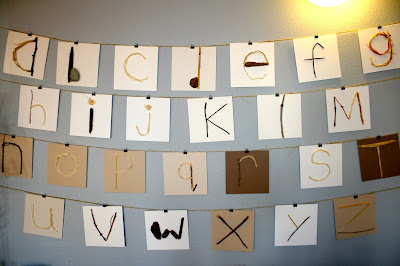Montessori employs a "write to read" approach to literacy. We introduce symbols phonetically rather than naming them ("a" as in apple rather than saying the letter name, "A") and use the sandpaper letters to leverage the sense of sight, touch and hearing.
In this way children are often writing before they read and reading emerges spontaneously.
This process is thrilling to witness in the life of a child. I have experienced it alongside many children, including my own. It's the moment when the letters c- a- t suddenly make sense as a coherent word! It is often followed by a great burst of enthusiasm and a confident pronouncement of "Cat! That says cat!" The joy belongs entirely to the child. We didn't "teach" that child to read. We provided all the necessary support to make reading possible.
A similar approach is going on in the studio, where children explore symbolic representation, writing, story telling and more...all the time.Many children draw pictures or zig-zag lines to depict words, thoughts, ideas and experiences. Lines or scribbles drawn on paper (which may appear random to a bystander) often provide a visual record of a story unfolding from within the child.
When a more deliberate approach is required in order to convey a clear message, I use the same copywriting strategies we offer in the classrooms
Writing is a form of symbolic representation. It's a system of symbols that we collectively agree upon for communication but it is symbolic.
In my work as studio teacher, I am equally inspired by the original symbolic languages of childhood and their creative expression as I am by the acquisition of the written and spoken word. They are each important aspects of human expression and I feel strongly that it is our job as teachers and stewards of childhood, to champion and nurture the diverse languages of expression.










No comments:
Post a Comment